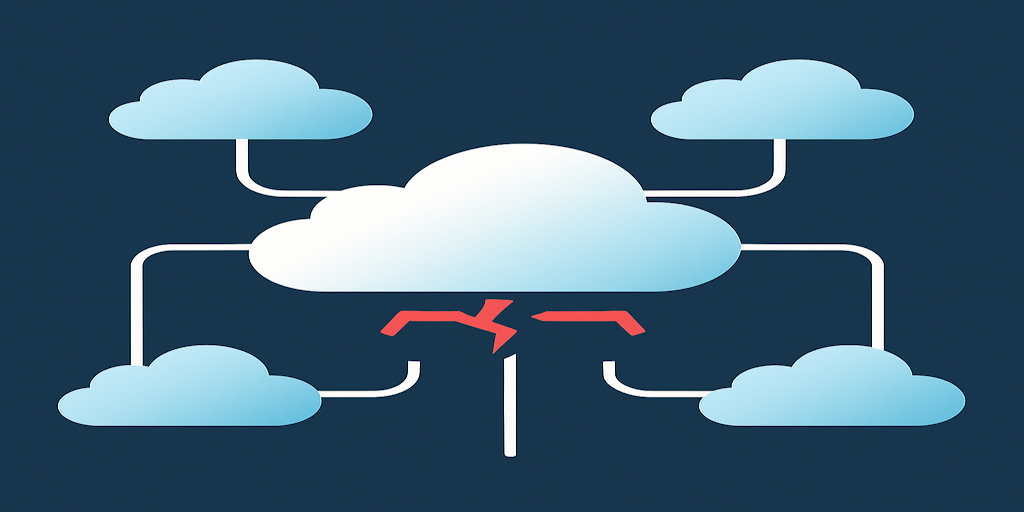
A Leadership View on Hidden Single Points of Failure
The AWS outage on October 20 was not just a cloud hiccup. It reminded leaders that resilience is structural, cultural, and owned at the top. Every external dependency, no matter how reputable, creates shared fate. When one vendor stalls, your entire operation can follow.
The Illusion of Infinite Uptime
Cloud services promise availability without ownership. The more you consume, the less you control. Many executives assume redundancy lives somewhere beneath the surface. It does not, unless you build it.
Feature flag systems like LaunchDarkly, identity platforms like Okta, CI/CD tools, monitoring, and CDNs all remove friction while centralizing risk. When one fails, you lose more than functionality. You lose the ability to respond. Deployment stops. Authentication fails. Visibility disappears. That is not downtime, it is paralysis.
Why This Is a Leadership Issue
These risks rarely appear in board decks or executive scorecards. They sit hidden in architecture diagrams and vendor contracts. The impact reaches business continuity, brand trust, and customer confidence.
This is not a DevOps problem. It is a governance gap. The decision to rely on vendor X for capability Y is a business tradeoff between speed and sovereignty. Leaders need the visibility to understand those tradeoffs before they become liabilities.
How to See the Risk You Already Own
As a CxO, you do not need to read configurations. You need to ask better questions.
Dependency Transparency
- Do we have a current inventory of external services that our operations rely on?
- For each, do we know the provider, region, and SLA tier?
- What happens if that provider fails for a day?
Operational Autonomy
- Can we deploy or roll back if our CI/CD vendor is offline?
- Can we authenticate if our identity provider fails?
- Can we monitor production without external tools?
Resilience Ownership
- Who validates third-party dependency risk?
- How often do we simulate vendor outages in disaster recovery testing?
- Do teams know which dependencies are critical path and which are optional?
Governance Integration
- Are vendor dependencies part of architecture and risk reviews?
- Is there an executive view of our dependency footprint updated quarterly?
- Do procurement and engineering coordinate before renewals?
What to Expect When You Start Asking
The first reaction will be discomfort. Many teams have never mapped these dependencies.
You will hear “we trust the vendor’s SLA” or “the provider covers that.” That response is the signal. Ownership is assumed, not verified.
Leadership must set the tone. Resilience is not about blame when things fail. It is about creating visibility before they do.
How to Lead Toward Real Resilience
- You cannot eliminate risk, but you can govern it.
- Build and maintain transparency about dependencies.
- Assign ownership for third-party risk.
- Run vendor outage drills.
- Make uptime a shared responsibility between your teams and the vendors you choose.
- Include dependency metrics in governance and review cycles.
Resilience does not come from process, it comes from clarity.
When leaders know where control ends and vendor dependency begins, better decisions follow. Multi-region becomes default. Caching becomes normal. Configuration returns to systems you control.
The Broader Message
The AWS outage was a symptom, not the disease. We built speed through delegation and lost sovereignty in the process.
Resilience today is not about backup data centers or larger SLAs. It is about knowing who holds the keys to your ability to operate.
When your teams can answer that with confidence, your company is not just cloud-hosted, it is cloud-ready.